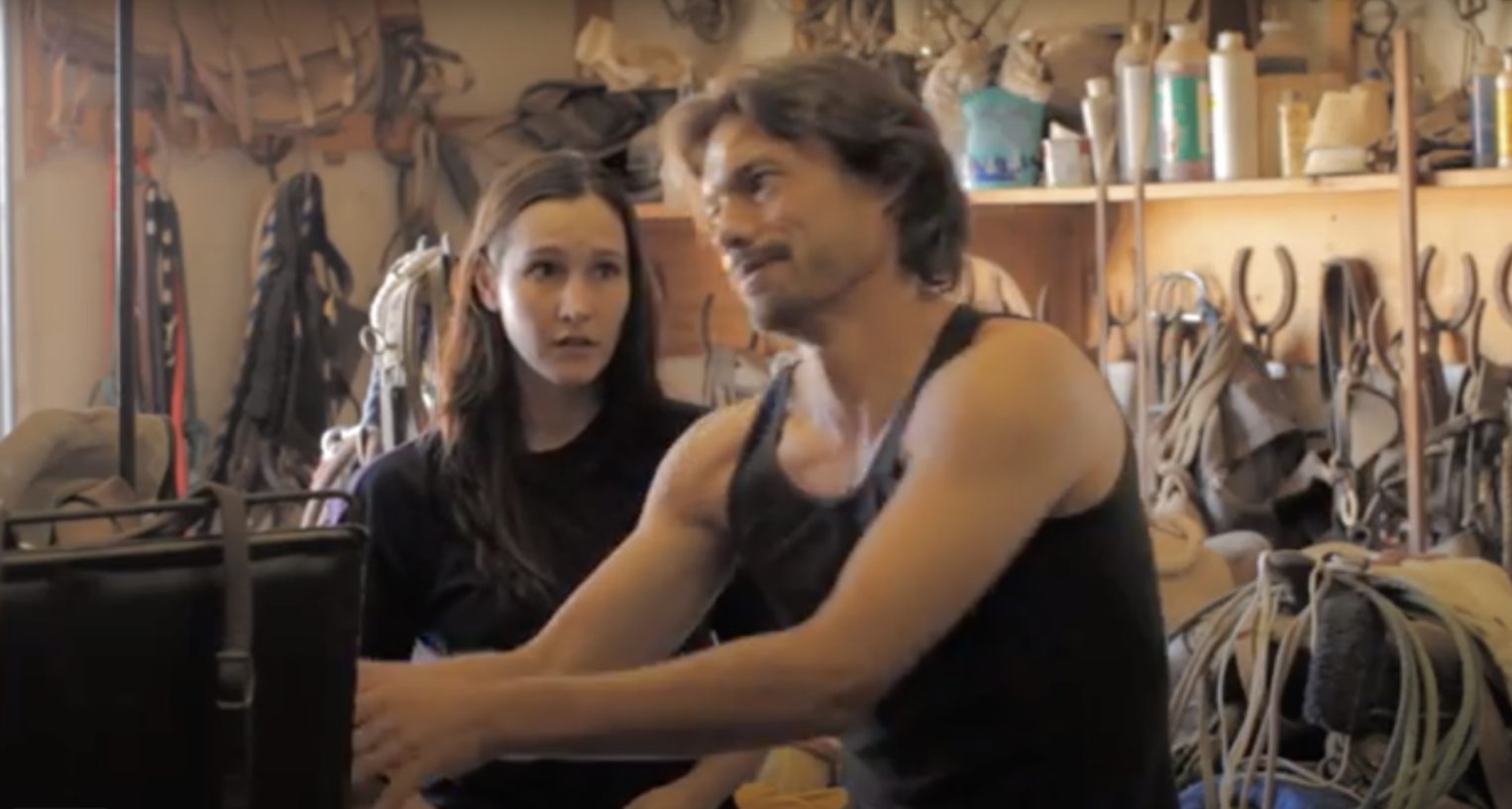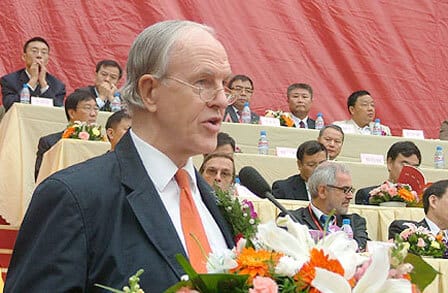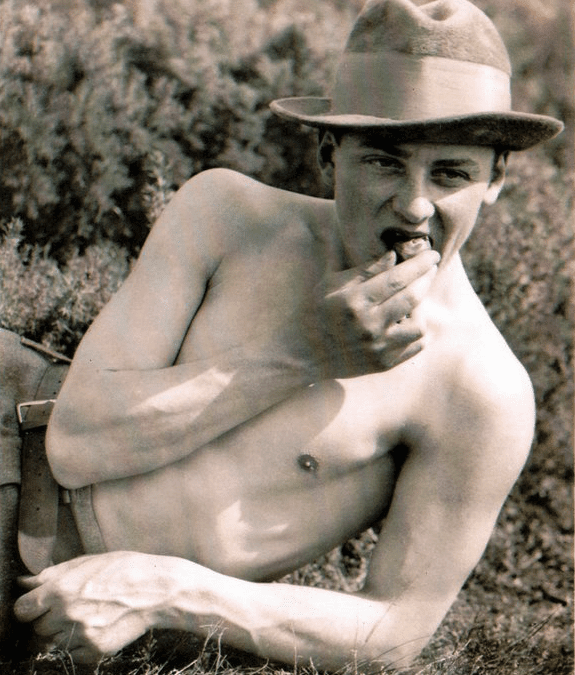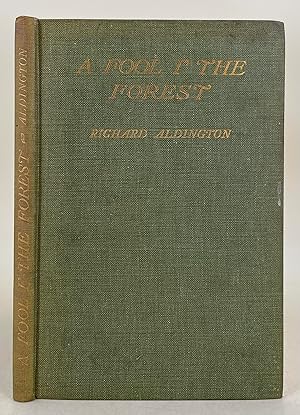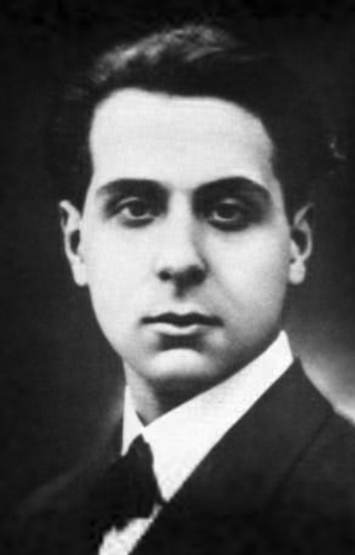Report of the Ninth Meeting of the London D. H. Lawrence Group
Catherine Brown
Lawrence’s Short Stories on Film
Thursday 25th June 2020
By Zoom (during period of Coronavirus lockdown)
6.30-8.30 pm
ATTENDERS
Shirley Bricout, in Vannes, Brittany, France
Catherine Brown, in Kilburn, London
Nicolas Ceramella, in Rome, Italy
Bob Hayward, in Melton Mowbray, Leics.
Glenys Hayward, in Melton Mowbray, Leics.
Pat Hopewell, in Ladbrook Grove, London
Izzy Jenkinson, in Leeds
Alex Korda, in Ladbrook Grove, London
James Morgan, in Carmarthen, Wales
Dudley Nichols, in Westerham, Kent
Jane Nichols, in Westerham, Kent
Dave Orwin, in Bakewell
Iris Orwin, in Bakewell
Laura Ryan, in Gateshead, London
Stewart Smith, in Dorchester, Dorset
Maria Thanassa, in Havering, Essex
Nahla Torbey, in Wimbledon, London
James Walker, in Sherwood, Nottingham
Kathleen Vella, in Magarr, Malta
Colin Yeates, in Muswell Hill, London
Gareth Giddings, Portishead, Nottingham
NB
This was the group’s first meeting with people in live attendance from outside the UK: Shirley in Brittany, Nick in Rome, and Kathleen in Malta. This internationalism fitting with Lawrence’s own travels, we look forward to having these and other people join us from abroad for future meetings. Unfortunately technical problems meant that we could not hear Nick. Tech –near-miraculous though it may be – is not yet infallible.
EPIGRAPH
When I went to the film–
When I went to the film, and saw all the black-and-white feelings that nobody felt,
and heard the audience sighing and sobbing with all the emotions they none of them felt,
and saw them cuddling with rising passions they none of them for a moment felt,
and caught them moaning from close-up kisses, black-and-white kisses that could not be felt,
it was like being in heaven, which I am sure has a white atmosphere
upon which shadows of people, pure personalities
are cast in black and white, and move
in flat ecstasy, supremely unfelt,
and heavenly.
from Pansies, 1929 (1Poems 385)

‘Close-up (Kiss)’
by September 1928
INTRODUCTION
Lawrence didn’t like film, as the poem and painting above make clear. Stephen Alexander, who suggested the films for us to watch in this session (for which thanks) has two blog posts on the subject.
Yet, as Louis K. Greiff notes in his chapter in The Edinburgh Companion to D. H. Lawrence and the Arts (eds Catherine Brown and Sue Reid, forthcoming 2020), ‘For this he has been repaid by an avalanche of screen adaptations’ (p. 413). Seventy-four Lawrence film adaptations have been released between 1949 and 2018 (comparing to fifty-six for Thomas Hardy, fifty-four for James Joyce, forty-one for Aldous Huxley, and seventeen each for Virginia Woolf and E. M. Forster). For more on this subject see Louis K Greiff’s 2001 D. H. Lawrence: Fifty Years on Film (2001) and Jason Mark Ward’s 2016 The Forgotten Film Adaptations of D. H. Lawrence’s Short Stories (2016).
Of the thirteen adaptations which belong to the twenty-first century, three – Pharaoh’s Heart (2002), The Rocking Horse Winner (2010) and Lady Luck (2013) – are adaptations of the same short story, ‘The Rocking Horse Winner’. However, only one of the adaptations has been released to cinemas (Pascale Ferran’s 2006 Lady Chatterley et l’homme du bois), and three to television (the BBC’s 2003 Sons and Lovers, 2011 Women in Love and 2015 Lady Chatterley’s Lover). The rest have been short films of short stories released online (particularly to Vimeo and YouTube). They are non-commercial, generally released for free, and made by younger directors on a tight budget.
Since we are still living through the era of Coronavirus it seemed that film might bring us together, just as the internet itself did for our meeting – for all Lawrence’s reservations about the medium.
READING AND WATCHING
The White Stocking
Story:
in The Prussian Officer and Other Stories, pp. 143-164
Written autumn 1907, first pub. October 1914
10 minutes, 2014, dir. Travis Mills
The Horse Dealer’s Daughter
Story:
in England, My England, and Other Stories, pp. 137-152
Written between November 1916 and 1921, first pub. October 1922
28 minutes, 1983, dir. Robert Burgos
Hadrian [You Touched Me]
Story:
in England, My England, and Other Stories, pp. 92-107
Written summer 1919, first pub. April 1920
13 minutes, 2014, dir. Travis Mills
The Rocking Horse Winner
Story:
in The Women Who Rode Away and Other Stories, pp. 230-243
Written by Feb. 1926, first pub. July 1926
30 minutes, 1977, dir. Peter Medak
The stories were written over two decades, between 1907 and 1926, and as such include one of Lawrence’s earliest stories (’The White Stocking’) and one of his later (’The Rocking Horse Winner’). We discussed them and their adaptations in order of the stories’ writing.
The film adaptations were made between 1977 (’The Rocking Horse Winner’) and 2014 (’The White Stocking’ and ‘You Touched Me’). All the stories are set in England; all the adaptations except ’The Rocking Horse Winner’, which is British, are translations to the United States.
All the stories are set in the present. Only the film of ’The Horse Dealer’s Daughter’ is set at the time of the story’s setting; the rest are updated to the present of the film’s making.
THE DISCUSSION
THE WHITE STOCKING

Story written autumn 1907, first pub. October 1914; film 10 minutes, 2014, dir. Travis Mills
[In the film, director Travis Mills plays the role of director of a minimalist stage adaptation of the story. The argument between husband and wife escalates until the moment in Lawrence’s story when Ted says ‘“You’d go off with a nigger for a packet of chocolate”’ (PO 148). In the film the actor playing Ted begins a modified version of this line, but cannot finish it. The film then shows an argument between the actor, who refuses to say the line, and the director, who insists on it being said. A black cameraman having sided with Mills, the actor reluctantly agrees to say the line, but the film ends before he does so.]
James Morgan opened the discussion by praising the story as a fine work by a young man, but criticizing the film as jejune, and quite possibly the work of a film student. The dramatic minimalism reminded him of the National Theatre’s mash-up of the three mining plays Husbands & Sons. Others concurred in finding the film weak. Bob thought that the film stopped when it had reached the point of impasse that resulted from its own mis-conception.
However, some discussion was then had on the film’s treatment of racism – particularly topical at the height of the 2020 Black Lives Matter movement, especially given that the film is American. Laura thought that the actor’s censorship of the play’s script – and the resultant censorship of the play and the film – was emblematic of the way in which discussion of Lawrence is truncated in the present: ‘he was racist, sexist, so let’s not talk about him’. Shirley noted the contrast between the actor’s refusal to say ‘nigger’ and the fact that all the cast and crew use the word ‘fuck’ – a word that caused such trouble at the trial of Lady Chatterley’s Lover, but which has since become far more accepted, albeit as an expletive rather than a positive descriptor.
Kathleen thought that the stage set’s minimalism, and the meta-artistry entered at the point that the rehearsal is broken off, were both meant to render the adaptation timeless. But Izzy noted that the film very much belongs to its own time, as is inevitable with any adaptation.
Catherine noted that Louis K. Greiff considers the film to be as much an exploration of sexism as of racism. Throughout the discussion about racist language the only woman in the room – Amber Michelle, who plays Elsie – is marginalized by the men. She asks to make a contribution to the discussion, but is refused by the director. Her marginalization is therefore itself marginalized, in that racism seems to be the dominant theme. Is the film perhaps in fact about intersectionality?
Discussion moved to the story itself, which Pat noted had undergone three previous drafts. Jessie Chambers wrote in her memoir that in the first version the Elsie character, then called Prissie, was based on Lawrence’s own mother as a younger woman; at a function at Nottingham Castle she tried to draw out her hankie, but drew out a stocking instead.
Stephen Alexander’s blog posts on the story provoked some discussion. Jane noted that Stephen emphasised Ted’s arousal by his faithless wife, but she herself thought that the arousal was principally that of Elsie, who found a jealous husband more interesting than a secure one. Catherine felt that the reconciliation at the end of the story – which the film never reaches – was a queasy one, somewhat resembling that at the end of The Daughter-in-Law, written six years later.
THE HORSE DEALER’S DAUGHTER

Story written between November 1916 and 1921, first pub. October 1922; film 28 minutes, 1983, dir. Robert Burgos
[The film is set at the same time as the story, but moved to the United States]
James Morgan found this the most effective of the four films. It kept closely to the finer details of the story, was very well cast (especially the eponymous Mabel), and was moving. Bob agreed, and praised its non-linguistic expressiveness, which matched that of the story itself. James found that the transposition to the US of the time of the story’s writing worked well, given the importance of horses to American society then. Alex thought that the transposition was done to New England (Maine, Vermont, New Hampshire), because of the covered bridges that were in view. It was acknowledged, however, that the Midlands sense of an industrial context was lost, and also that the story was written before Lawrence had ever seen the US (albeit he was strongly interested in that country during the time of writing).
Nic initiated considerable discussion of the story and film as studies in depression. Stephen Alexander writes about this here. James Walker concurred that depression could not simply be controlled or easily relieved; Alex wondered why the doctor would not simply walk away from Mabel (as a doctor he must after all be used to depressives). But James noted that he had been oddly moved by Mabel even before he rescued her from suicide, and Glenys agreed that there were indications from the beginning of the story of a connection between them (though Izzy considered this connection to be overdone in the film). Stewart thought that the brothers too were depressive. Kathleen noted the influence of the Persephone myth: that one had to pass through darkness (that of near-drowning) in order to experience regeneration – a trope that is often found in Lawrence. The doctor is brought back to life by rescuing a desperate woman in a similar way to Mellors in Lady Chatterley’s Lover. However, whereas that couple’s union could have come about in many different ways, the couple of this story are united by a phenomenal coincidence (the fact that the doctor happens to be passing at the time of Mabel’s attempted suicide). Bob resisted the interpretation of Mabel as simply a depressive; he pointed out that she was tough, rational and strong, and had spent many years looking after her household. Nonetheless, several of us agreed with James Morgan that if this couple married, they would be in for a tough time. Izzy had as little confidence in the long-term happiness of this couple as of that in ‘The White Stocking’ – though Nick thought that Mabel and the doctor would be the happier.
Since the meeting Shirley has added the following: Lawrence starts a letter to J.B. Pinker from Zennor on 12 January 1917 “I send you the MS. of another story –‘The Miracle’, which is beautiful and ends happily” (3L 74). It is in fact rare for Lawrence to comment on the ending of a story or novel. No periodical took the story, which was then forwarded to Lawrence who had settled in Sicily. He revised it and changed its title, and possibly also the degree of happiness of the ending. The film adaptation has been discussed in ‘Reading Lawrence through Film: The Horse-Dealer’s Western’ by Jason Mark Ward, The DH Lawrence Review 40.1 (2015): 37-58.
HADRIAN [YOU TOUCHED ME]

Story written summer 1919, first pub. April 1920; film 13 minutes, 2014, dir. Travis Mills
[In the film, updated to modern America, the sisters’ father has died before the action begins. The older sister deliberately, rather than accidentally, touches Hadrian in the night; but it was the late father’s wish that he should marry his softer, younger daughter, rather than the harder, older one. Hadrian indeed forms a union accordingly, and the older sister is banished from the film’s ending]
Iris thought that the film was so poor, and such a revision of Lawrence’s story, that it should not have Lawrence’s name on it. James agreed that the film was pointless, finding that the strange accidental touching in Lawrence’s story (which Nick interpreted in terms of the Electra complex) had simply been turned into sexual cliché; Gareth described it as ‘very watered-down’. James Walker noted that the adaptation felt more like Lawrence’s story ‘The Fox’, where an incoming male displaces one female as the life-partner of the other, in the absence of any father figure; Izzy agreed. Women keeping up a farm is presented by ‘The Fox’ as being untenable; Kathleen noted that in Malta, where she lives, similar attitudes persist.
The film certainly loses the story’s study of sadism and misogyny on the part of the sisters’ father (though Bob considered that the father shows some wisdom). Stewart argued that the father’s desire for revenge felt unreasonable and unmotivated, and that this quality was communicated to the story itself. Nick pointed out that the story has a significant plot overlap with Wuthering Heights, where the father brings home a disruptive, anarchic male foundling who ends up forming a kind of union with the daughter of the house, having made his money and grown into a man elsewhere (a dominant speculation has been that Heathcliff becomes a British mercenary in the American War of Independence; Hadrian has worked in a Canadian factory). Hadrian may have been reinforced in his repudiation of authority by his experience of the relatively-egalitarian New World, but the film’s translation to the United States means that there is no such contrast in cultures (the story’s setting is based on the Pottery House at Lynn Croft, Eastwood, where the Lawrences lived from 1903).
There was some discussion of the importance of touch (Seltzer ignored Lawrence’s wish to change his original title, ‘You Touched Me’, to ‘Hadrian’). Iris noted that touch is something that we are all anxious about at this time of pandemic, yet that it is crucially important to Lawrence. Here, as in ‘The Horse Dealer’s Daughter’, a touch leads to a union. Finally, Catherine suggested that the film, in its deviation from Lawrence’s plot, was actually an attempt to improve on Lawrence by undoing his story’s twistedness. Rather than bringing Hadrian together with the daughter who most disapproves of him, he brings him together with the one who obviously likes him; perversity as well as friction are thereby lost.
When asked which of the couples depicted at the end of the three stories discussed so far stood the best chances of future happiness, four of us favoured the couple in ‘The White Stocking’, four the couple in ‘You Touched Me’, and nine the couple in ‘The Horse Dealer’s Daughter’.
THE ROCKING HORSE WINNER

Story written by Feb. 1926, first pub. July 1926; film 30 minutes, 1977, dir. Peter Medak
[The film, like the story, is set in England, but updates its action to its own (1977) present]
Nahla thought this the best film of the four (‘the only one I enjoyed’). Kathleen admired its ‘Britishness’, and James Morgan thought that the fifty-year updating worked well. Catherine thought that desire for but repression of discussion of money was peculiarly English, therefore this story would translate less well than the others to the United States. Alex questioned the film’s setting in a country house. He argued that the story indicates the family to be haute bourgeoisie (living ‘in Amersham or somewhere’, without a car), rather than aristocratic, and therefore to be failing-aspirant rather than decadent. Laura observantly noted that the same amount of money (‘£80,000 to the good’) had been retained from the original story to the 1970s adaptation.
However, it was on the story rather than the film adaptation that the balance of the discussion fell. Gareth observed that Lady Cynthia Asquith had asked Lawrence to write a story for a collection of ghost stories; James Morgan said that, like all ghost stories, this one worked on a psychological level; and James Walker said that the story had something of the aspect of Tales of the Unexpected. Dudley shared that Lawrence wrote much to Cynthia about her autistic child John, giving her advice on how to handle him (see for example L2 335-8, 14th May 1915). This may bear some relation to the story, as may the fact that Cynthia married a man with far less money, and always felt short of cash. Catherine considered the story to have some kinship with Peter Shaffer’s Equus – also the story of a boy with a quasi-religious and masturbatory obsession with his horse; although Bob thought that there was no suggestion of masturbation in the story, it was agreed that it was present in the film, where the process of riding a rocking horse is made visible. By contrast Stephen Alexander, in his blog post on the story, found the story hard to treat as anything other than a straightforward morality tale. James Morgan agreed with this. Stewart wondered what its implications were regarding predestination…
It should be noted that the four stories discussed were chosen largely at random, based on the availability of their film adaptations on YouTube. That being the case, the similarities between the first three stories were striking – as was the relative translatability of all four in time and/or space.
